The Urban Lens: From Bob Dylan to Jack Kerouac, see rare photos of the Village’s Beat Generation
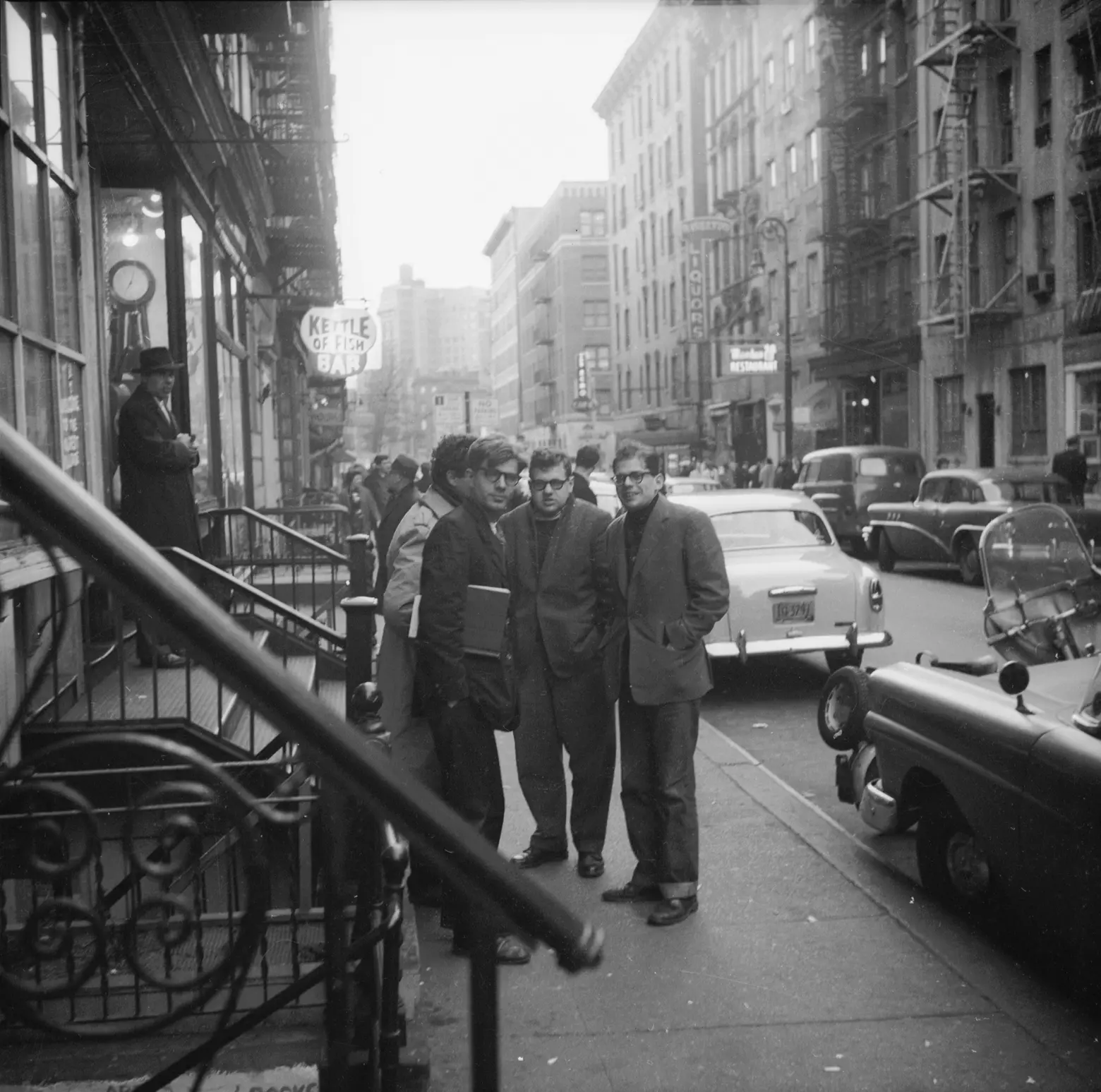
© Estate of Fred W. McDarrah
Perhaps no single photographer could be said to have captured the energy, the cultural ferment, the reverberating social change emanating from New York City in the second half of the 20th century as vividly as Fred W. McDarrah. McDarrah got his start covering the downtown beat of the Village Voice in the 1950s and ’60s, as that publication was defining a newly-emerged breed of independent journalism. McDarrah penetrated the lofts and coffeehouses of Lower Manhattan to shed light upon a new movement known as “The Beats” and went on to capture on film the New York artists, activists, politicians, and poets who changed the way everyone else thought and lived.
Through the generosity of the Estate of Fred W. McDarrah and the McDarrah family, the Greenwich Village Society for Historic Preservation was fortunate enough to add to its digital archive a dozen of the most epochal of Fred McDarrah’s images of downtown icons, including Andy Warhol, Bob Dylan, Jane Jacobs, and Allen Ginsberg. And just in time for the holidays, you can purchase your own copy (with all proceeds benefitting GVSHP!).

American poet Allen Ginsberg (1926 – 1997) (right) as he stands with his long-time companion Peter Orlovsky (second left, facing camera) and several unidentified others) near the Kettle of Fish bar (114 MacDougal Street), New York, New York, March 8, 1959. © Estate of Fred W. McDarrah
Allen Ginsberg and fellow Beat poet and life-partner Peter Orlovsky were photographed by McDarrah outside the Kettle of Fish bar at 114 MacDougal Street, not long after “Howl and other Poems” had been released and litigated in one of the most high-prolife and consequential obscenity trials of the 20th century. Ginsberg and fellow Beats like Jack Kerouac called the Kettle of Fish a second home of sorts, located along the MacDougal/Bleecker corridor, which was the center of both the folk renaissance and the literary revolution of the 1950s and ’60s. While Ginsberg spent time in San Francisco, Paris, and Tangiers, he ultimately called New York home, living in the nearby East Village until his death in 1997. Over the years Fred McDarrah took many of the images of Allen Ginsberg which came to define the public’s perception of him, including the poet in a stovetop Uncle Sam hat and sitting in repose against Judson Memorial Church.
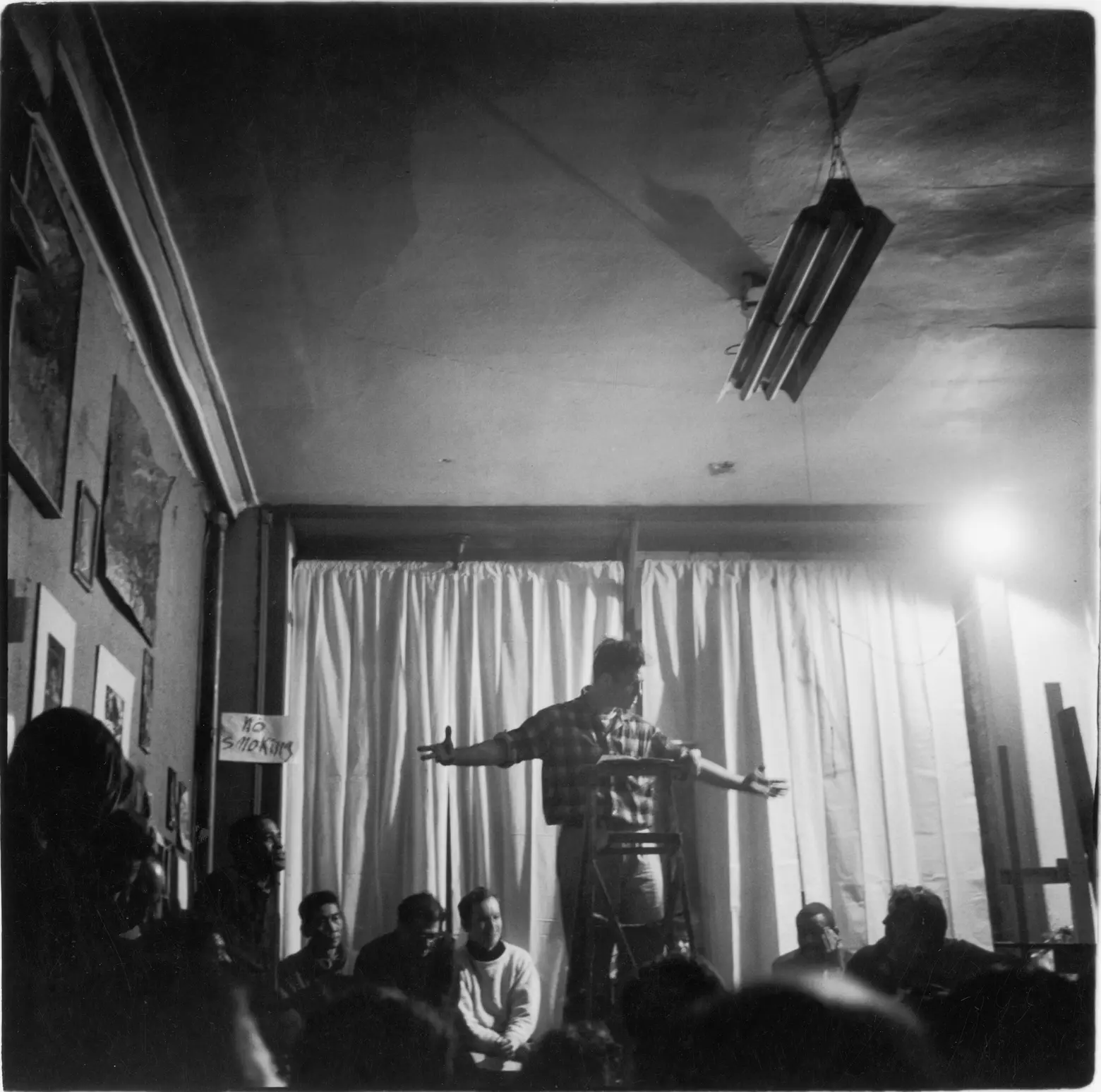 American author Jack Kerouac (1922 – 1969) gestures expansively as he reads poetry at the Artist’s Studio (48 East 3rd Street), New York, New York, February 15, 1959. © Estate of Fred W. McDarrah
American author Jack Kerouac (1922 – 1969) gestures expansively as he reads poetry at the Artist’s Studio (48 East 3rd Street), New York, New York, February 15, 1959. © Estate of Fred W. McDarrah
Jack Kerouac became the leading voice of the generation, pushing back against the stifling conformity of 1950s America. The originator of the “Beat Generation” appellation published “On the Road” in 1957, which instantly catapulted him to literary superstardom. Following its publication, Kerouac cut back noticeably on his public appearances, especially after he was badly beaten outside one of his favorite haunts, the San Remo Café on Bleecker and MacDougal Street, in 1958.
One of his rare public appearances during this period was also perhaps his most celebrated one. On February 15, 1959 Kerouac took that stage at George Nelson Preston’s “Artist’s Studio” at 48 East 3rd Street. In what is considered one of the important poetry readings ever held in New York, and a defining moment for the Beats, Kerouac, Allen Ginsberg, Gregory Corso, Peter Orlovsky, and LeRoi Jones, among others, read from their works that night. McDarrah captured Kerouac, a semi-devout Catholic, in this Christlike pose, reading from “On the Road.” The image so came to so define Kerouac and the Beats that it was even used on the cover of “The Beat Scene” by Elias Wilentz, a compilation of short works to which nearly every prominent Beat writer contributed in 1960.
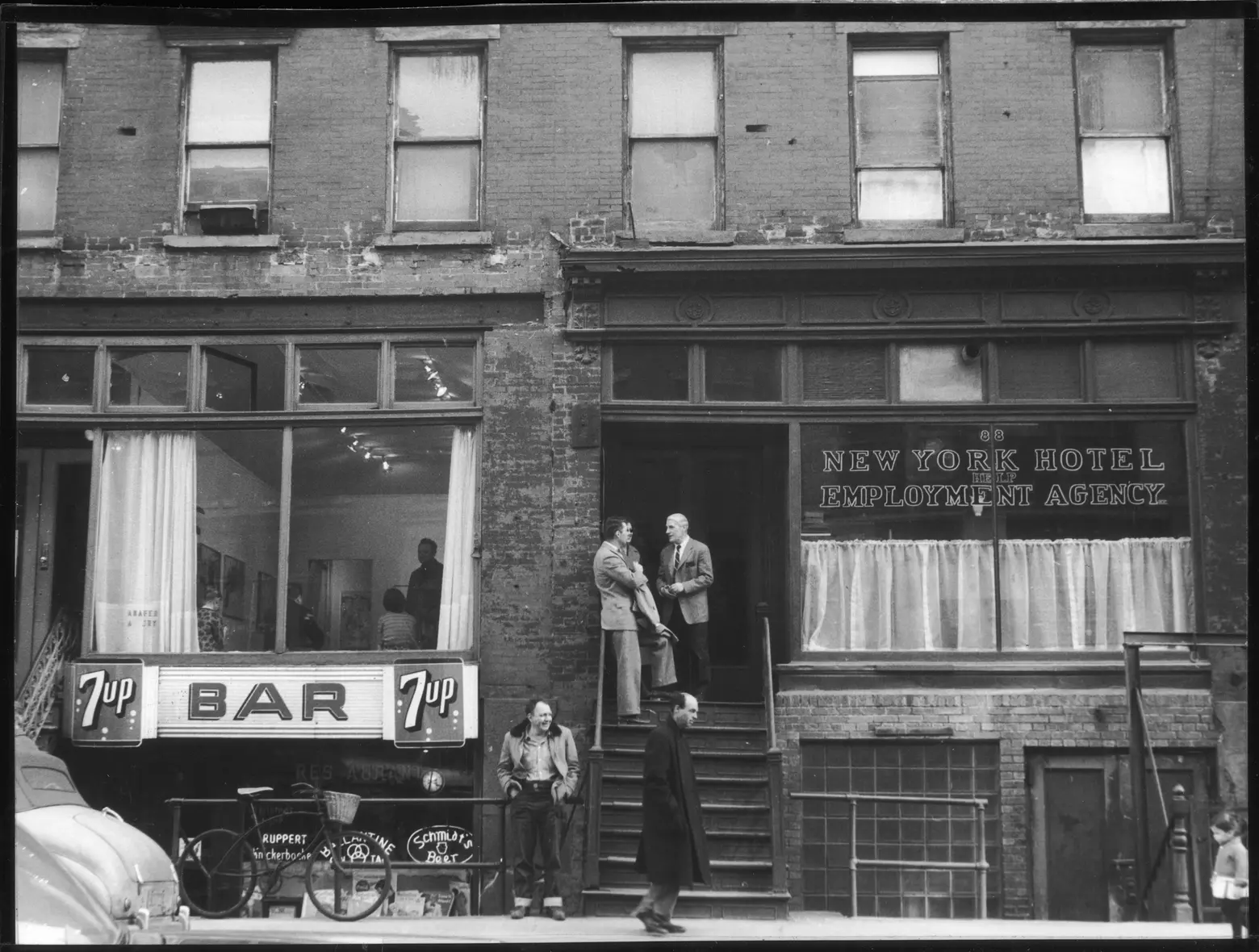
Dutch American artist Willem de Kooning (1904 – 1997) (center, with light hair) speaks with an unidentified couple at the top of a stoop next door to the Tanager Gallery (the storefront above the ‘Bar’ sign) on 10th Street, New York, New York, April 5, 1959. © Estate of Fred W. McDarrah
Though you would barely know it today, in the 1950s the center of the art world was located in a string of scruffy artist-run galleries and studios on East 10th Street between 3rd and 4th Avenues that featured the emerging New York School of Abstract Expressionist painters. Central to that scene was Willem de Kooning, whom many critics say bore greater responsibility for shifting the center of the art world from Paris to New York than any other figure. From 1952 to 1962, during what was the height of his career, de Kooning maintained a studio at 88 East 10th Street, right in the center of the East 10th Street gallery row. De Kooning is pictured here on the front steps of his building with novelist Noel Clad, with the Tanger Gallery visible just next door above the bar. McDarrah was good friends with de Kooning and many of the other abstract expressionists and was paying him a visit when he snapped this iconic photo which perfectly captures how great art was emerging from New York’s gritty downtown streets at this time.
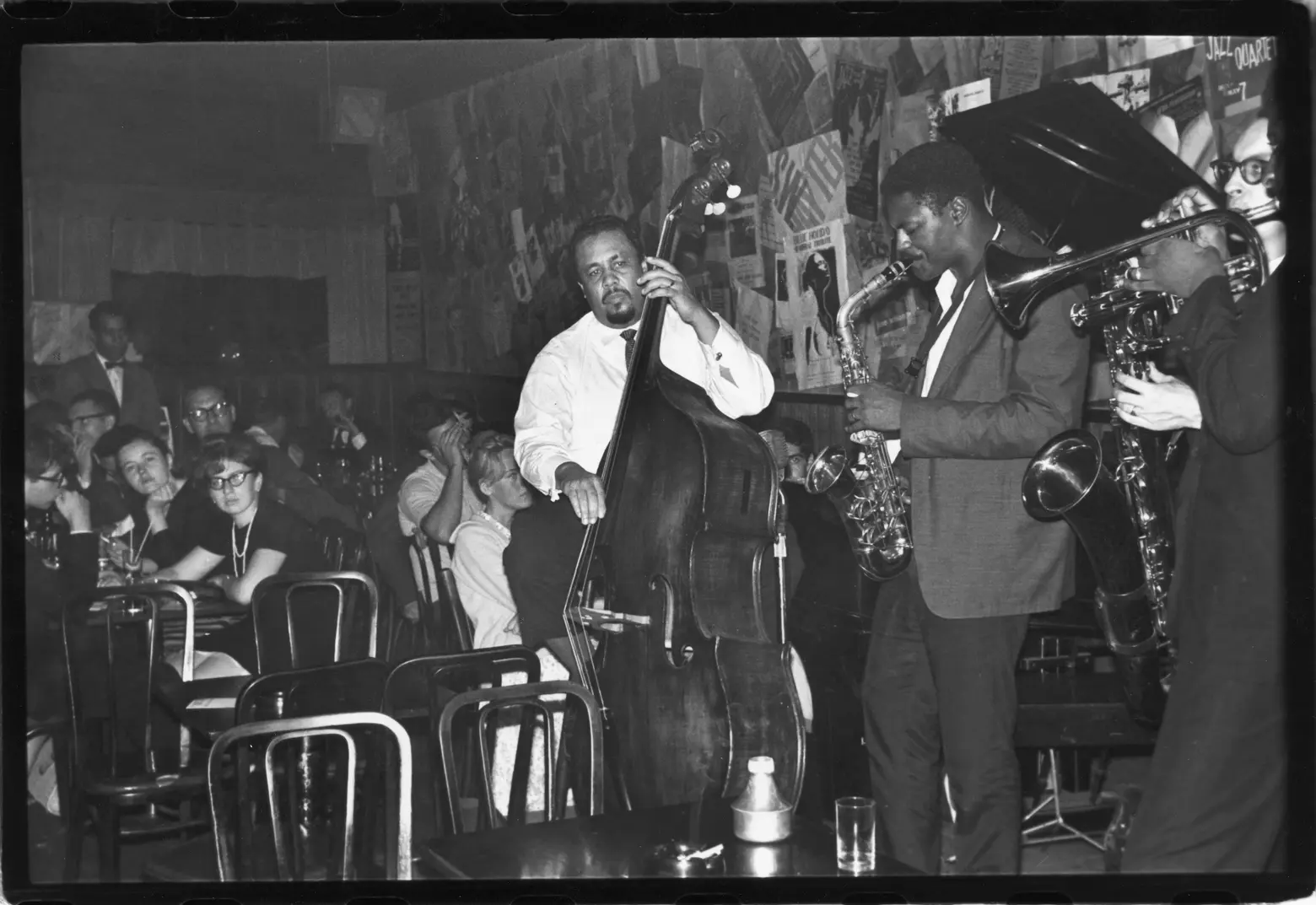
American jazz musician and composer Charles Mingus (1922 – 1979) (in white shirt) and his band perform at the Five Spot Cafe (2 St. Marks Place), New York, New York, August 22, 1962. © Estate of Fred W. McDarrah
The Five Spot Café was considered one of the premier locations for jazz anywhere in the mid-20th century. After its original home at 1 Cooper Square was demolished (now the site for the JASA residence for the elderly at Bowery and 5th Street), it re-opened just a few blocks north at 2 St. Mark’s Place. To mark the re-opening, the venerable venue called in none other than Charles Mingus to help christen its new home, in the base of what is now the St. Mark’s Hotel.
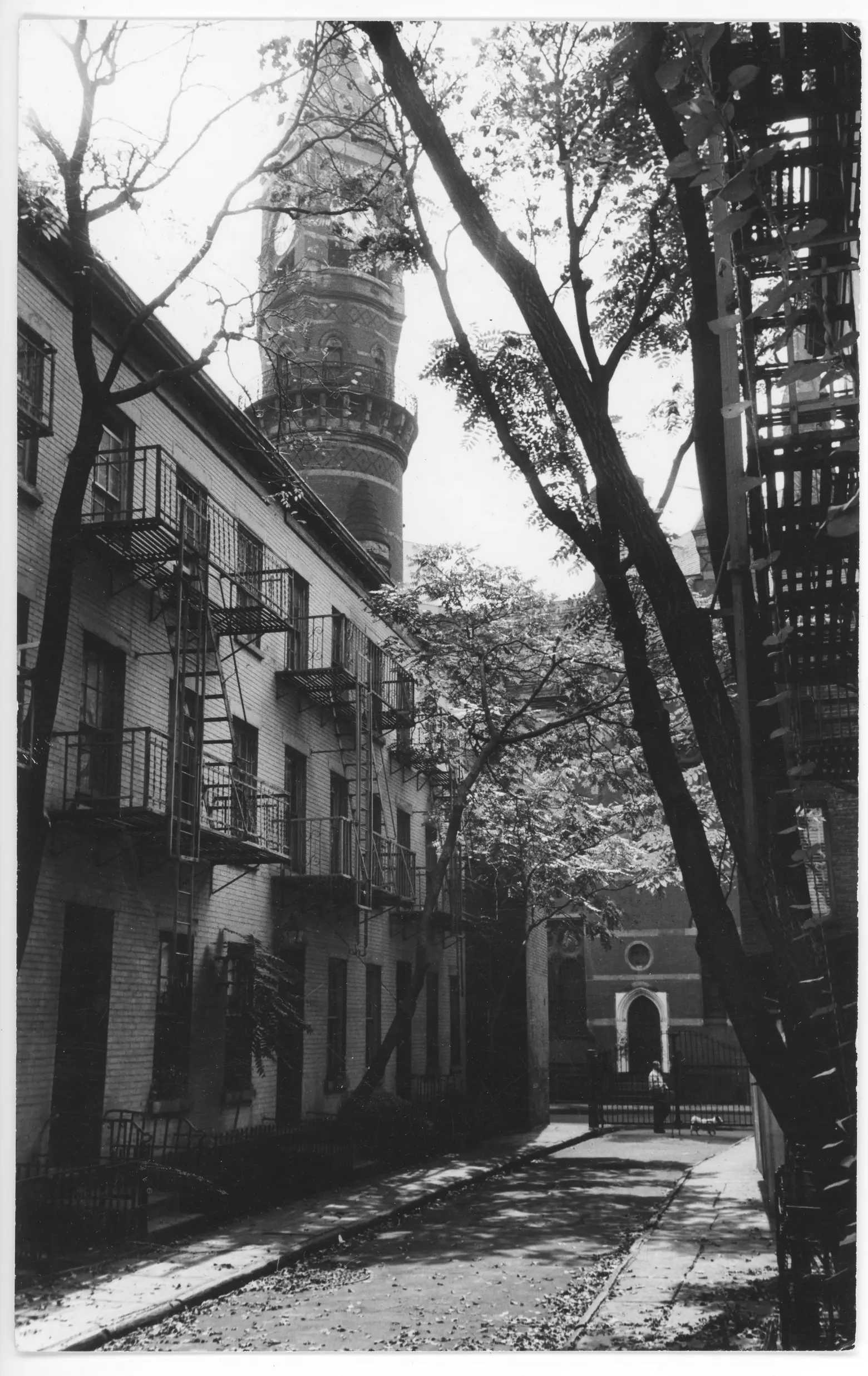 Looking from inside Patchin Place towards West 10th Street and the clock tower of the Jefferson Market Courthouse (now library), October 6, 1963. © Estate of Fred W. McDarrah
Looking from inside Patchin Place towards West 10th Street and the clock tower of the Jefferson Market Courthouse (now library), October 6, 1963. © Estate of Fred W. McDarrah
McDarrah was intimately involved with documenting the Greenwich Village preservation movement of the 1950s and ’60s, which was battling (and eventually defeated) a slew of proposals by Robert Moses to build highways through the neighborhood and demolish blocks and blocks of housing and businesses. One intimate battle at the heart of the neighborhood, which reached a fever pitch just after the demolition of the old Penn Station, was the fight to preserve the Jefferson Market Courthouse/now Library (1876) at 6th Avenue and 10th Street, which was slated for demolition. This photo of its iconic clock tower peering up over cobblestoned Patchin Place was more than just an idyllic Village moment captured on film; it was taken as part of the successful campaign to save the historic landmark from demolition, one of the first key victories which turned the tide for preservation after the fall of Penn Station.
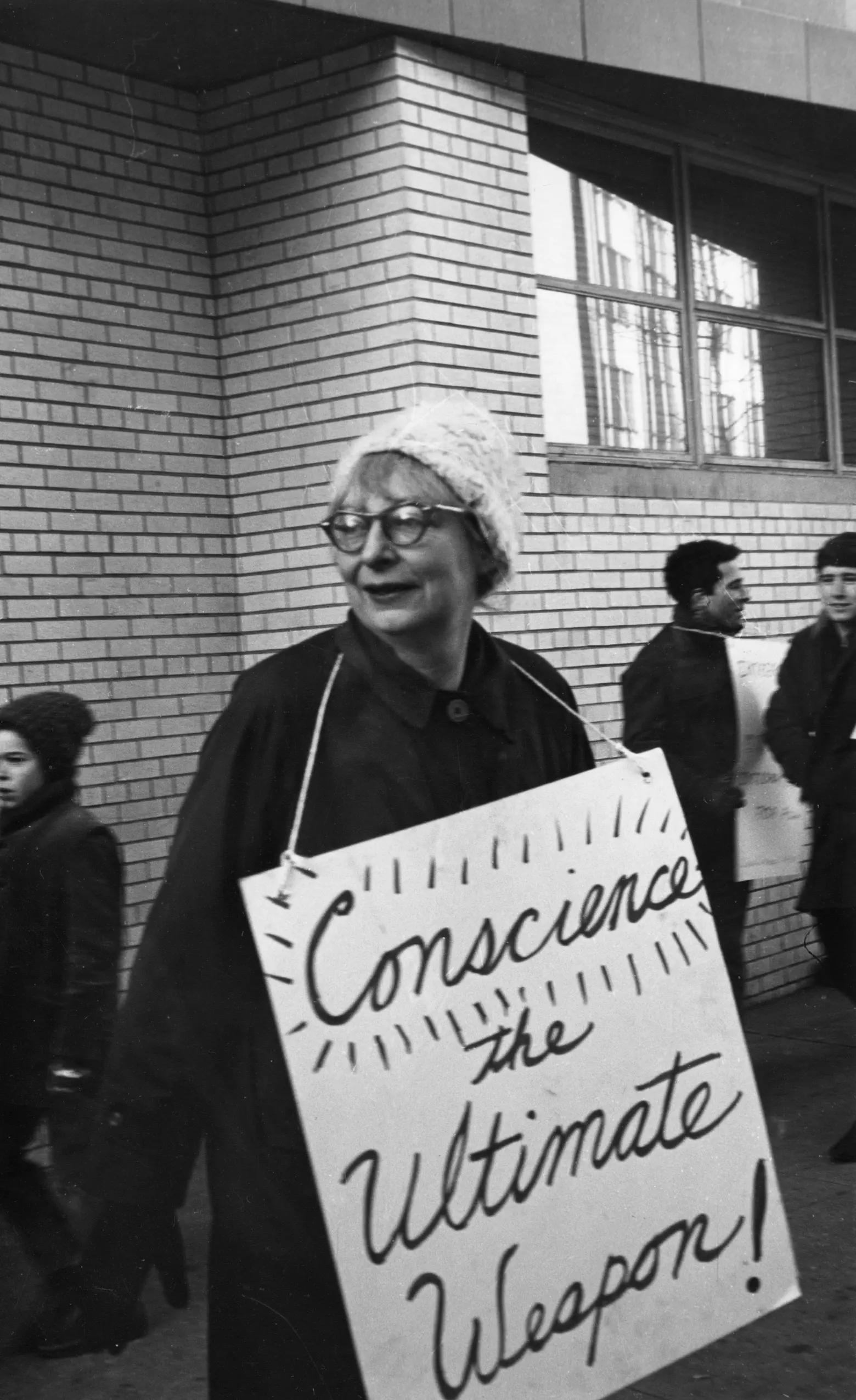
American-born Canadian social and urban activist & author Jane Jacobs (1916 – 2006), with a sign around her neck that reads ‘Conscience is the Ultimate Weapon,’ attends a boycott at Public School (P.S. 41) (at 116 West 11th Street), New York, New York, February 3, 1964. © Estate of Fred W. McDarrah
Fred McDarrah and the Village Voice assiduously chronicled the activities of Jane Jacobs, who in the 1950s and 60s was leading a movement in Lower Manhattan to retake communities from government bureaucrats, urban planners, and big business interests. A journalist herself, Jacobs was media-savvy and knew that good press coverage was key to winning preservation victories. Here she is seen protesting outside the newly-built P.S. 41 on West 11th Street in Greenwich Village – the school which both of McDarrah’s children later attended. Her picture-friendly posterboard was a signature Jane Jacobs tool for getting her message out and framing the battle in her terms.
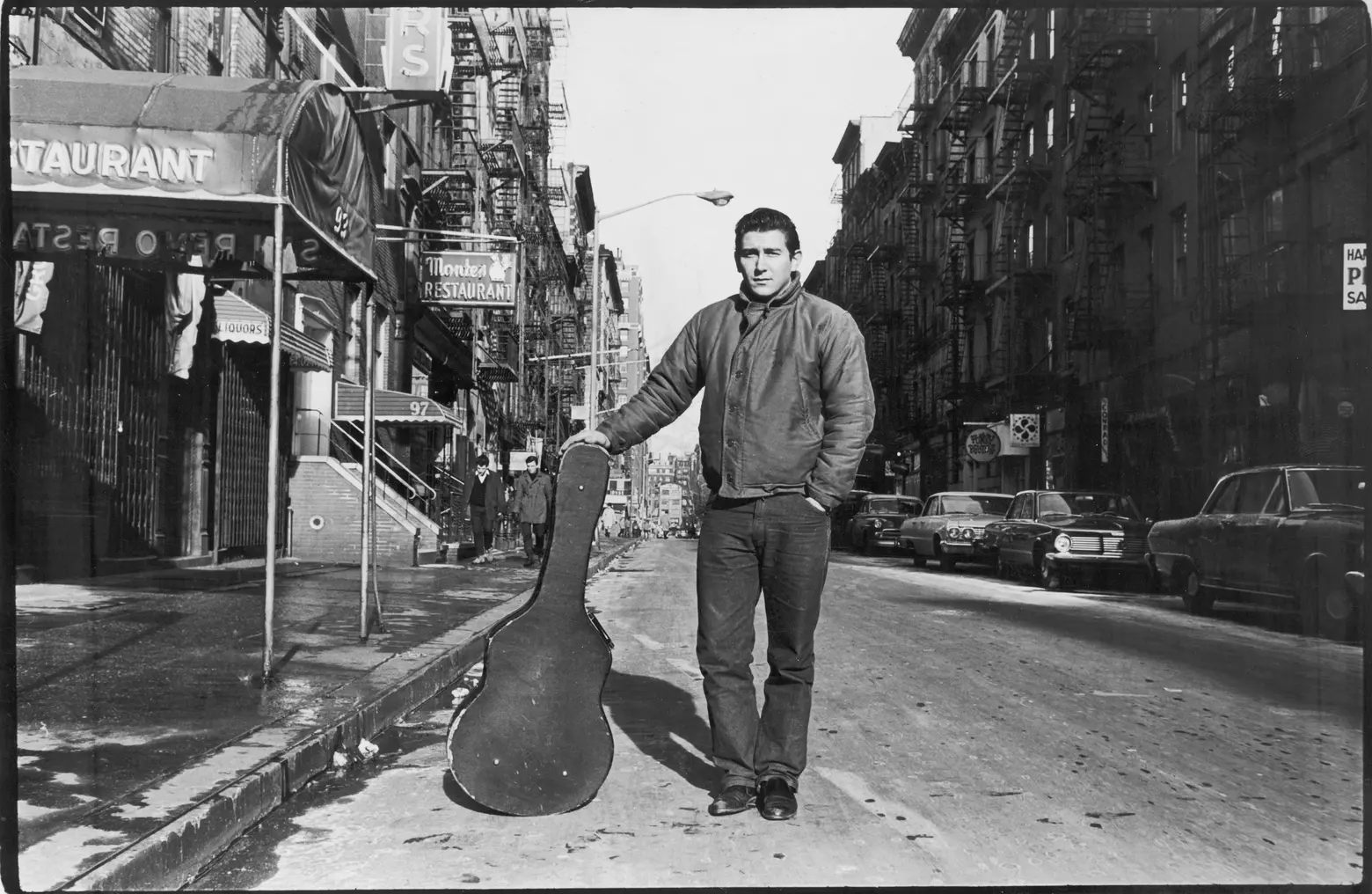
American folk musician and political activist Phil Ochs (1940 – 1976) poses with his guitar on MacDougal Street, New York, New York, Januray 3, 1965. © Estate of Fred W. McDarrah
Phil Ochs came from the decidedly political wing of the folk movement, making a name for himself in the Greenwich Village folk scene singing explicitly anti-war and pro-civil rights songs, often at some of the biggest rallies of the era for these causes. Ochs is standing in front of the tattered awning of the San Remo Café at MacDougal and Bleecker Street, the epicenter of the Village’s folk, Beat, and literary scene. The casually defiant pose, leaning on his guitar case, was so popular it was turned into one of the best-selling posters of 1967 when issued by an outfit called Personality Posters.
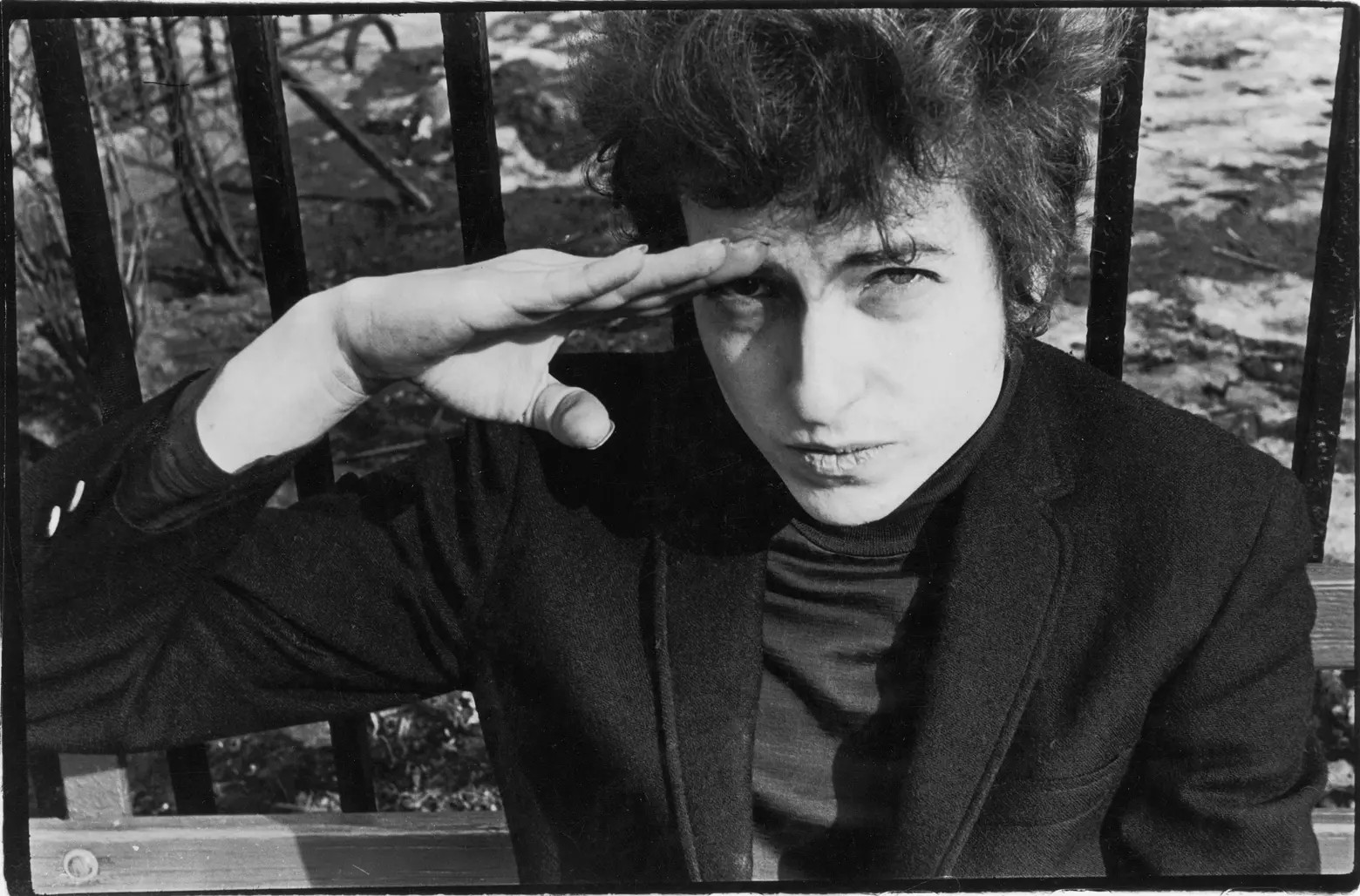
American musician Bob Dylan (born Robert Zimmerman) salutes as he sits on a bench in Sheridan Square Park, New York, New York, January 22, 1965. © Estate of Fred W. McDarrah
The folk music figure McDarrah was closest to, and probably did the most to immortalize, was Bob Dylan. There is perhaps no more recognizable image of Bob Dylan in than this famous “salute” pose taken by McDarrah in Sheridan Square on a cold January in 1965. The image was taken the week Dylan recorded “Bringing It All Back Home,” and has been used by everyone from Martin Scorsese, who put it on “The Bob Dylan Scrapbook 1956-1966” (the companion DVD to No Direction Home, his “American Masters” Dylan tribute), to Bob himself, who used it on the cover of 2014’s Complete Album Collection Vol. One. Cementing the epochal nature of the photo, is was placed on the cover of the very last print issue of the Village Voice, allowing Dylan to symbolically signal the end of that era.
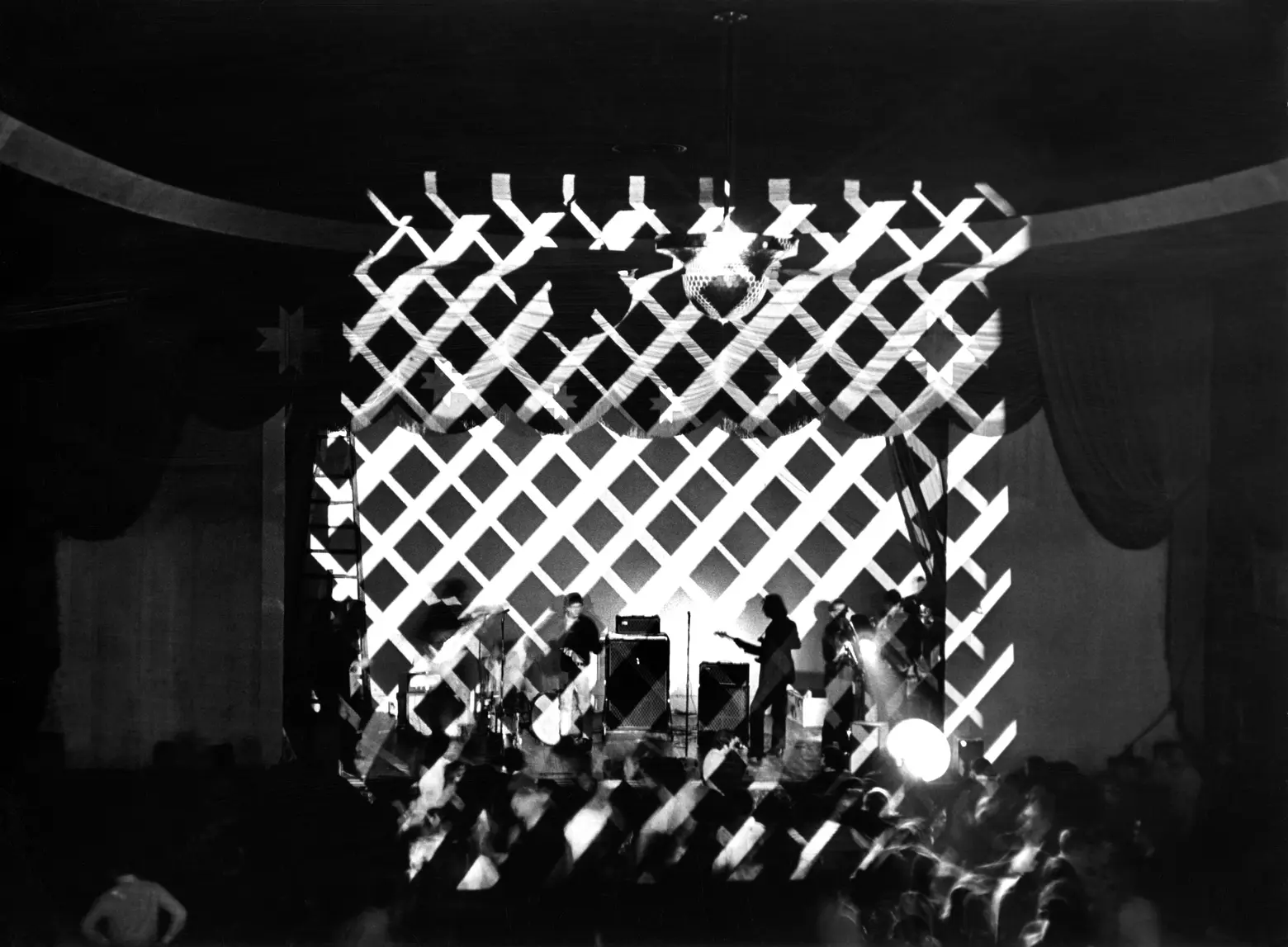
High-angle interior view of the stage at The Dom (from ‘Polski Dom Narodowy’ or ‘Polish National Home’, 23 St. Marks Place), where the Velvet Underground performed as part of Andy Warhol’s Exploding Plastic Inevitable series of staged, multimedia events (held primarily in 1966 and 1967), New York, New York, April 1, 1966. © Estate of Fred W. McDarrah
McDarrah’s chameleon camera lens was equally at home with proto-punk noisemakers The Velvet Underground as it was with any earnest folk singer. In fact, McDarrah was quite close to Warhol and the Factory, and extensively documented the Velvets’ earliest days. Key to their rise to downtown prominence was their month-long residency at Warhol’s St. Marks Place club The Dom, which began on April 1, 1966 as part of his “Exploding Plastic Inevitable.” McDarrah was there to capture this bizarre, multi-media performance on the opening night. So was the press, including the New York Times, which fueled interest in this underground phenomenon just as they were about to go into the recording studios to cut the demos for their history-altering first album, “The Velvet Underground and Nico.”
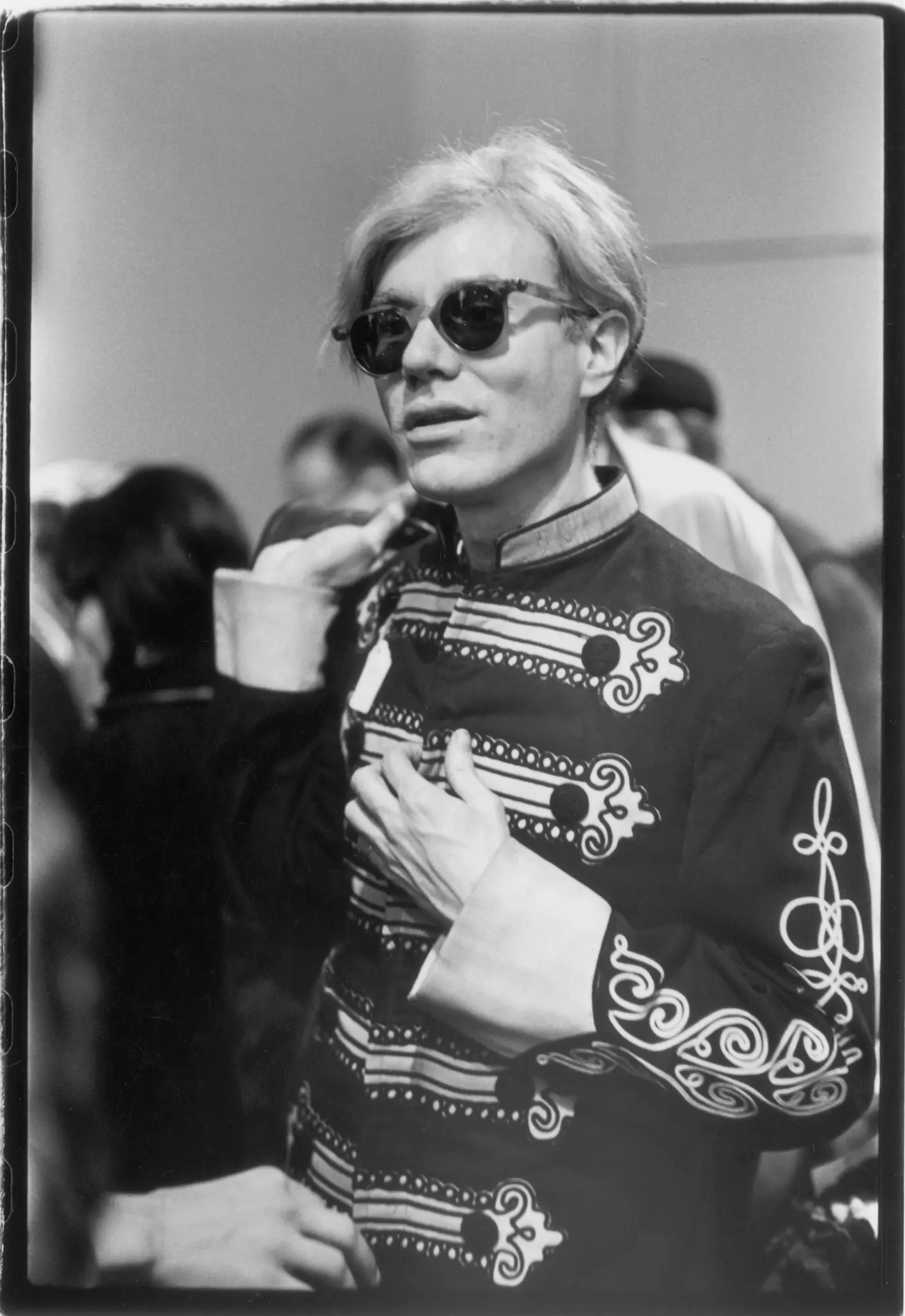 Portrait of American pop artist Andy Warhol (1928 – 1987) as he tries on a marching band uniform in a used clothing store (located on St. Mark’s), New York, New York, December 9, 1966. © Estate of Fred W. McDarrah
Portrait of American pop artist Andy Warhol (1928 – 1987) as he tries on a marching band uniform in a used clothing store (located on St. Mark’s), New York, New York, December 9, 1966. © Estate of Fred W. McDarrah
According to Fred McDarrah’s son Tim, Andy Warhol would call his father all the time to ask him to take his photo. This particular day, McDarrah agreed to go shopping with Warhol on St. Mark’s Place. Faux military and bandleader jackets were becoming fashionable, so Warhol decided to buy one; McDarrah’s photo of Warhol in his new purchase ran on the front page of the Village Voice soon after. John Lennon and Yoko Ono were loyal Voice readers. Tim McDarrah says that John once told his father that he showed this photo to his bandmates, who loved the look, and it was this that inspired them to choose the band leader outfits for the Sgt. Pepper album in early 1967.
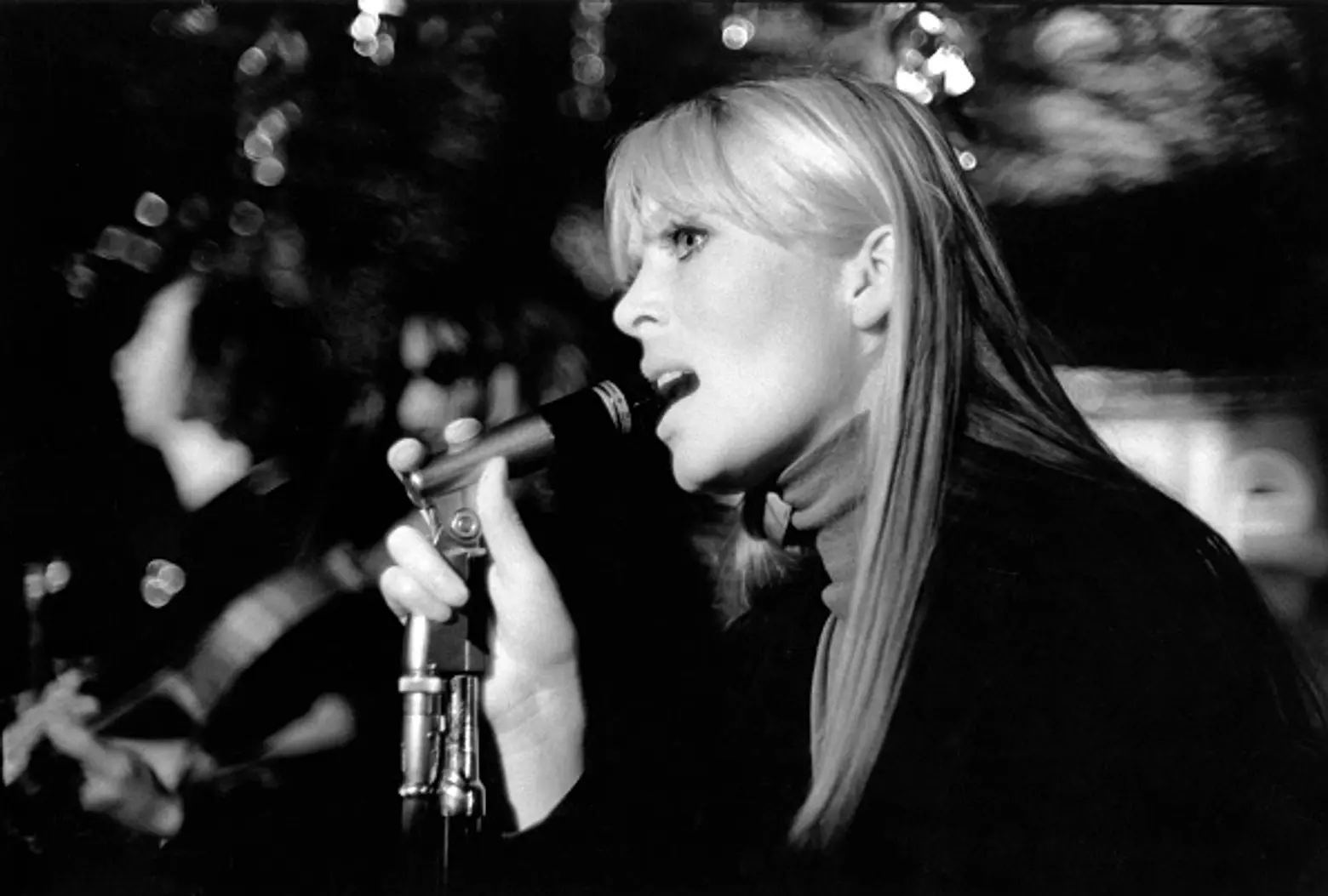
Close-up of German-born model and singer Nico (1938 – 1988, born Christa Paffgen) as she performs with the Velvet Underground at Steve Paul’s nightclub, the Scene (West 46th Street), New York, New York, January 7, 1967. © Estate of Fred W. McDarrah
German model Nico was a critical part of the image of the Velvet Underground in their first incarnation under Andy Warhol’s tutelage. Fred McDarrah would often accompany Andy to their shows to help capture their unique onstage presence. This image of an icy and translucent Nico signing, with the rest of the Velvets a fuzzy blur behind her, became one of the most iconic images of her and the band, on the eve of the release of their first album. This performance took place at The Scene near Times Square in January, 1967.
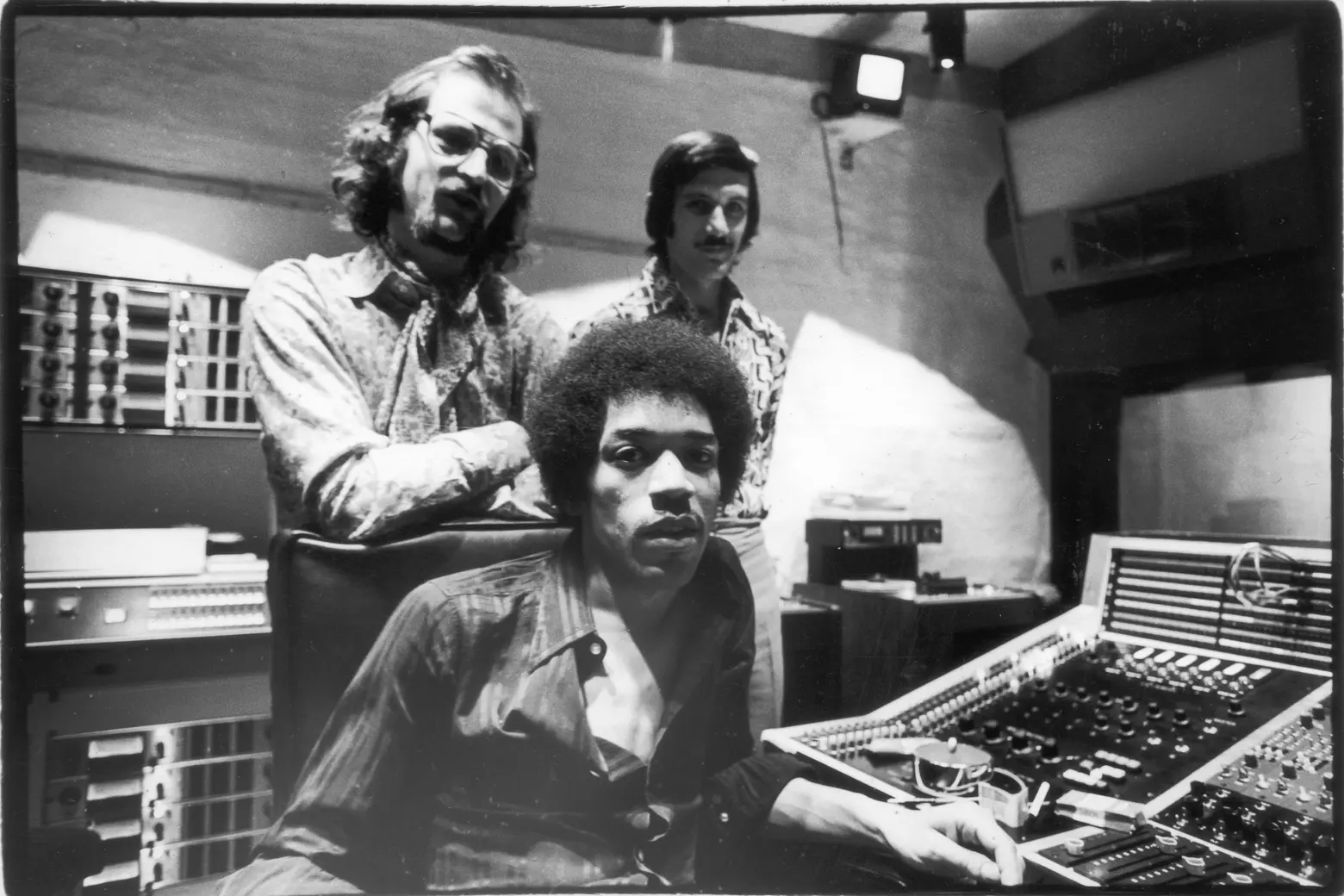
Portrait of American musician Jimi Hendrix (1942 – 1970) (seated), South African-born American music producer and engineer Eddie Kramer (standing left) and studio manager Jim Marron as they pose in the control room of Hendrix’s then still under construction Electric Lady Studio, New York, New York, June 17, 1970. © Estate of Fred W. McDarrah
Jimi Hendrix, who would have turned 75 last month, built Electric Lady Studios, the only (at the time) artist-run recording studio at 52 West 8th Street after experiencing cost overruns and creative frustration at traditional commercial studios. While Electric Lady Studios would go on to become one of the most legendary and sought-after recording studios in the world, producing records by everyone from the Clash to Beyonce, the Ramones to Madonna, Hendrix barely got to savor or experience one of the most enduring pieces of his musical legacy, as he died just three weeks after the studio opened. While the studio was still under construction, however, Fred McDarrah was called in to take this picture of Jimi Hendrix with producer and engineer Eddie Kramer and studio manager Jim Marron, who helped design and create the studio. According to McDarrah’s family, photos from this shoot are the only extant pictures of Jimi at the soundboard at Electric Lady Studios, as he died in September of that year.
For information about purchasing an estate-stamped, resin coated, archival quality print of any of these images, with all proceeds benefitting the Greenwich Village Society for Historic Preservation, click here.
+++
This post comes from the Greenwich Village Society for Historic Preservation. Since 1980, GVSHP has been the community’s leading advocate for preserving the cultural and architectural heritage of Greenwich Village, the East Village, and Noho, working to prevent inappropriate development, expand landmark protection, and create programming for adults and children that promotes these neighborhoods’ unique historic features. Read more history pieces on their blog Off the Grid.
RELATED:
- From Willem de Kooning’s loft to the threat of the wrecking ball: The history of 827-831 Broadway
- The long cultural and musical history of Jimi Hendrix’s Electric Lady Studios in Greenwich Village
- Iconic album covers of Greenwich Village and the East Village: Then and now
All photos © Estate of Fred W. McDarrah
Interested in similar content?
Leave a reply
Your email address will not be published.

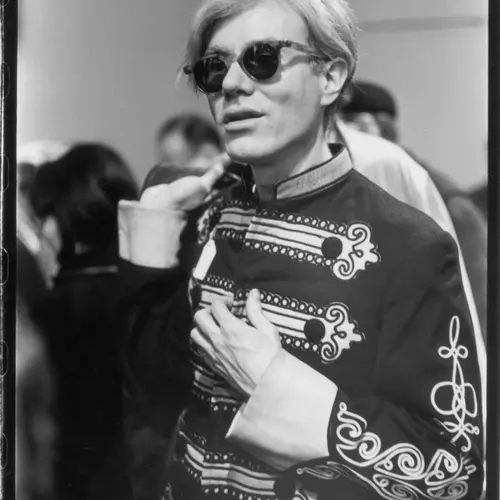
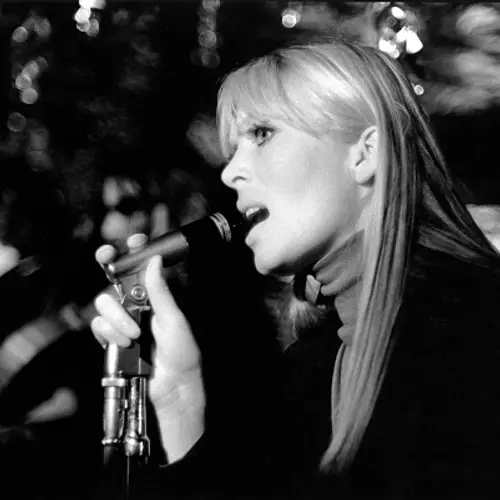
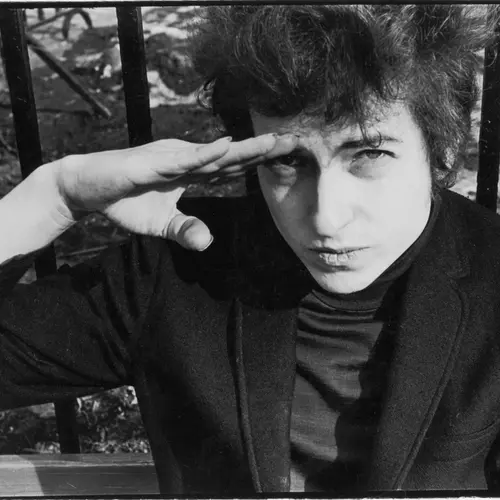
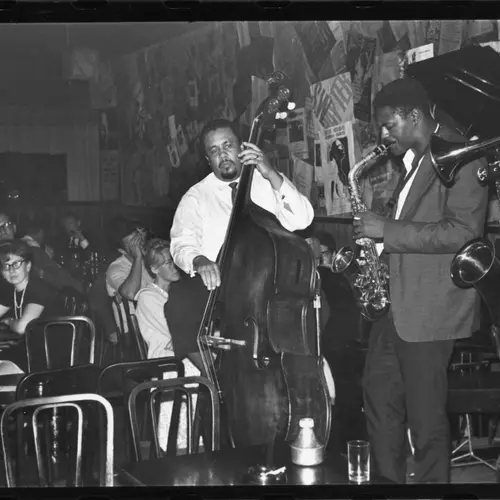
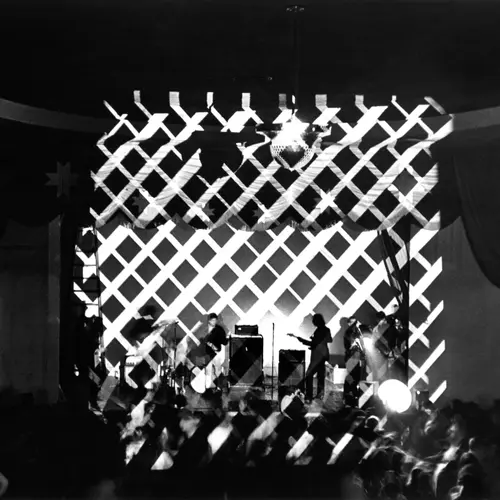
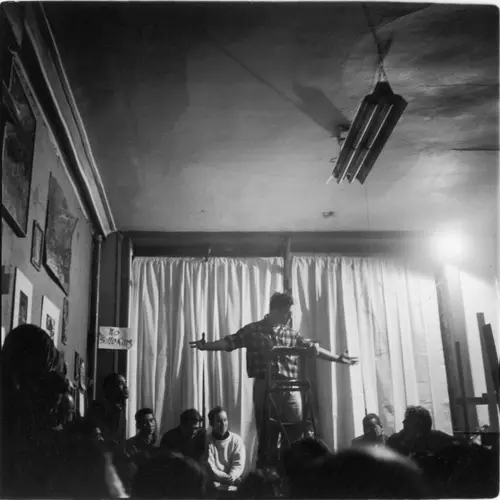
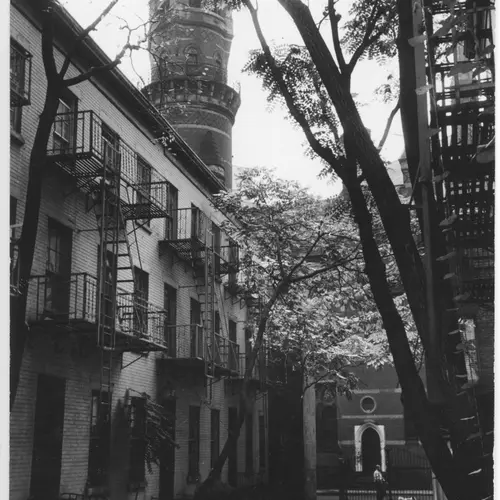
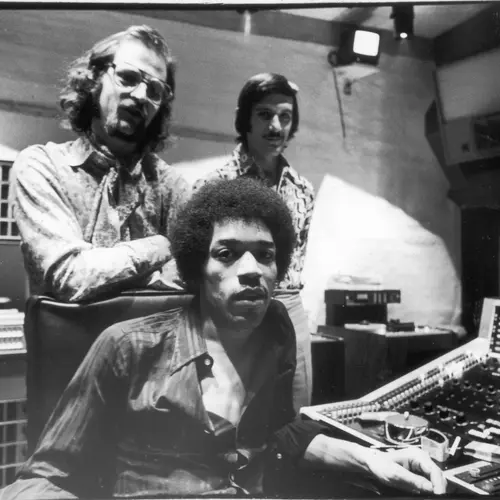
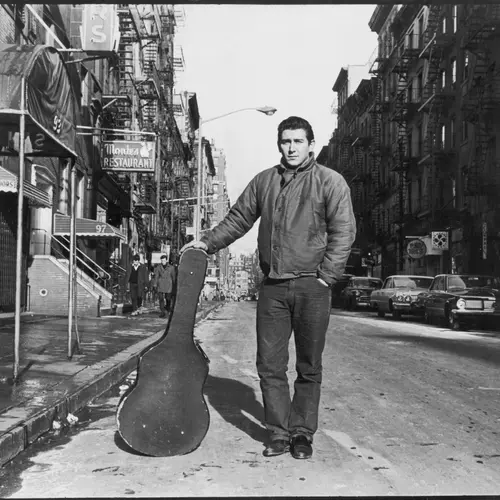
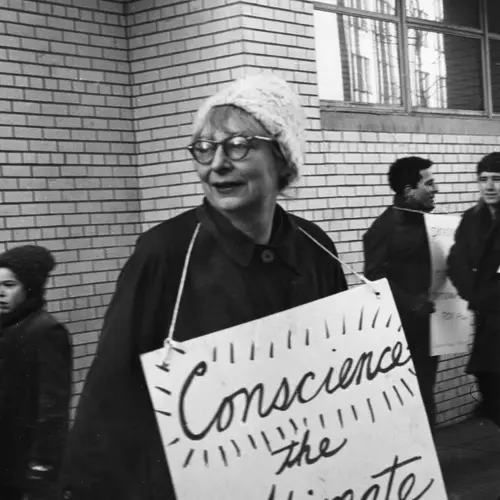
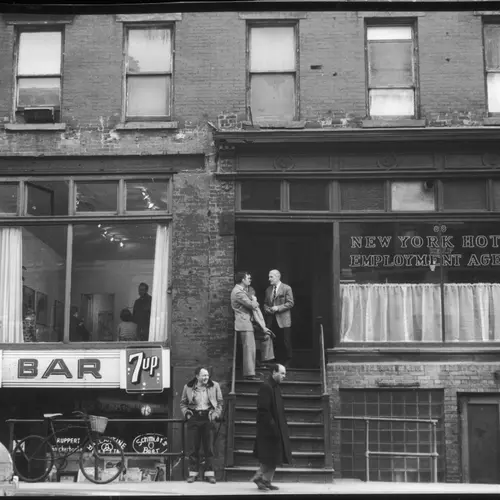
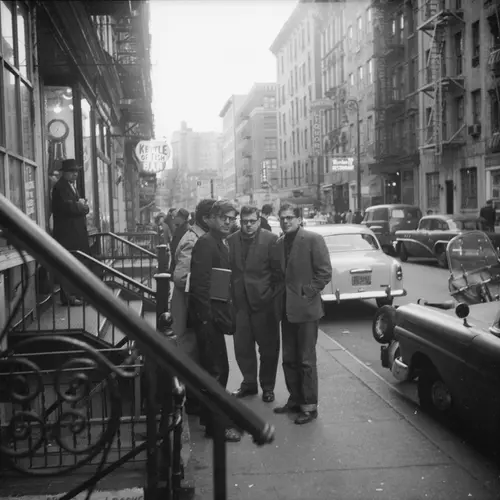



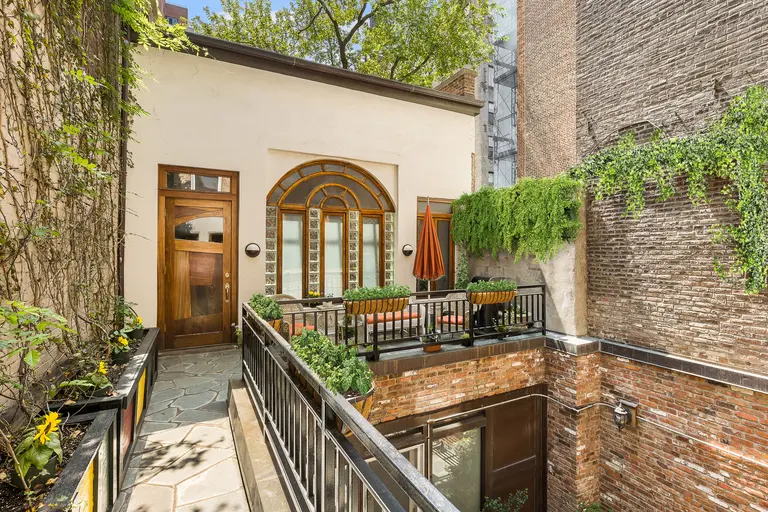
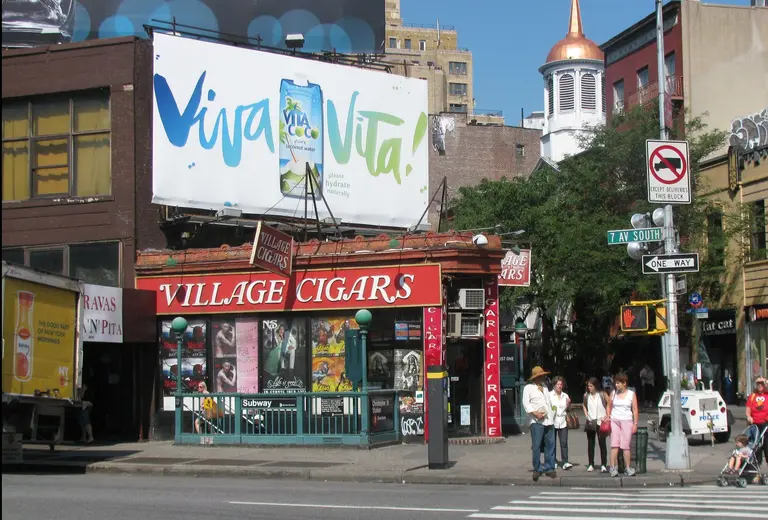
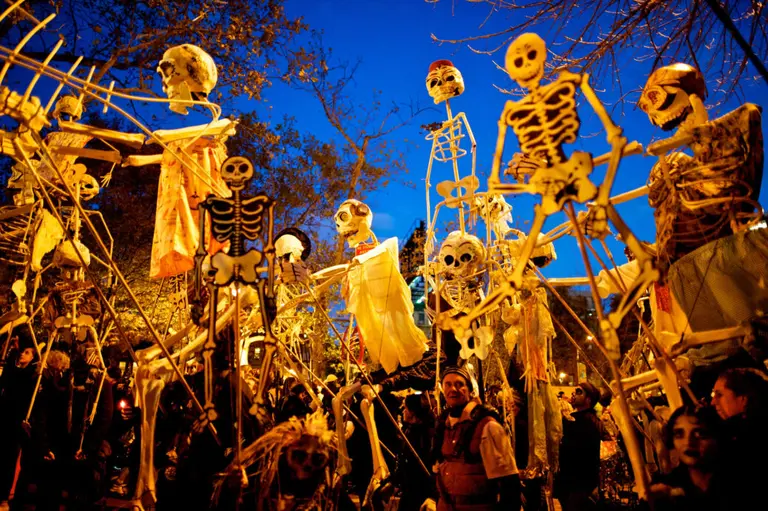





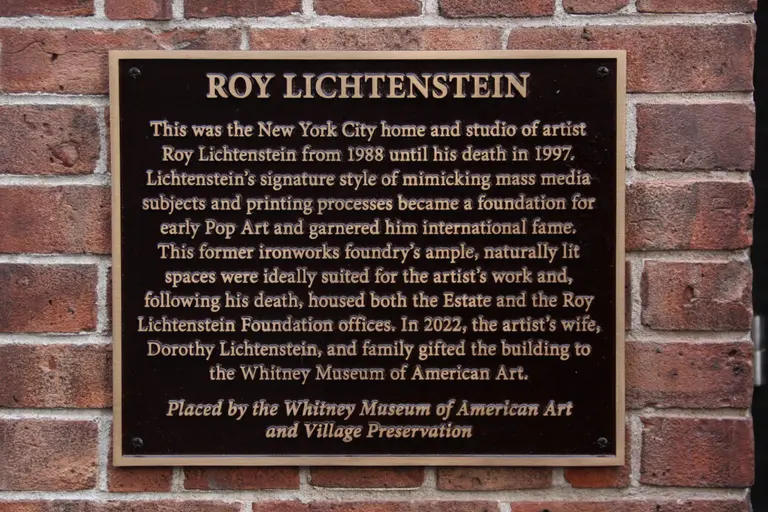
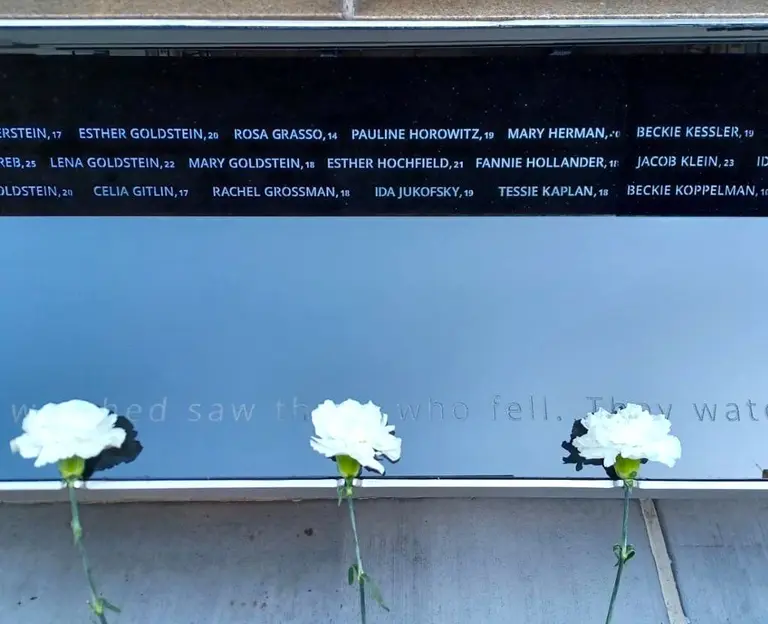
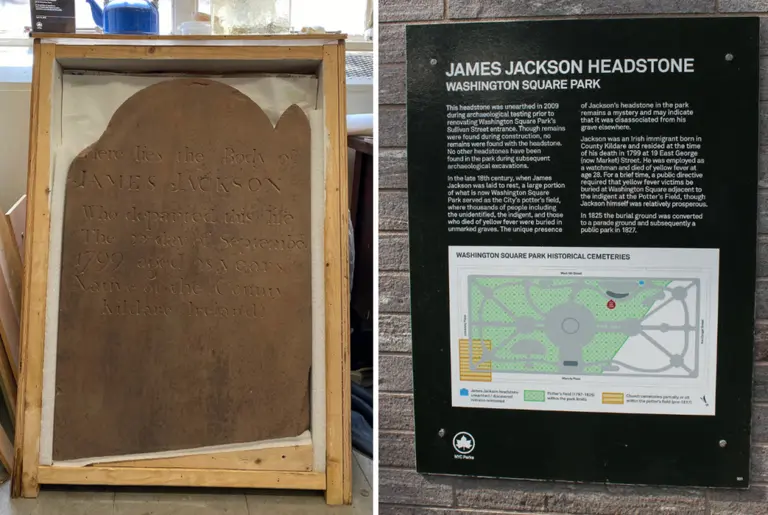
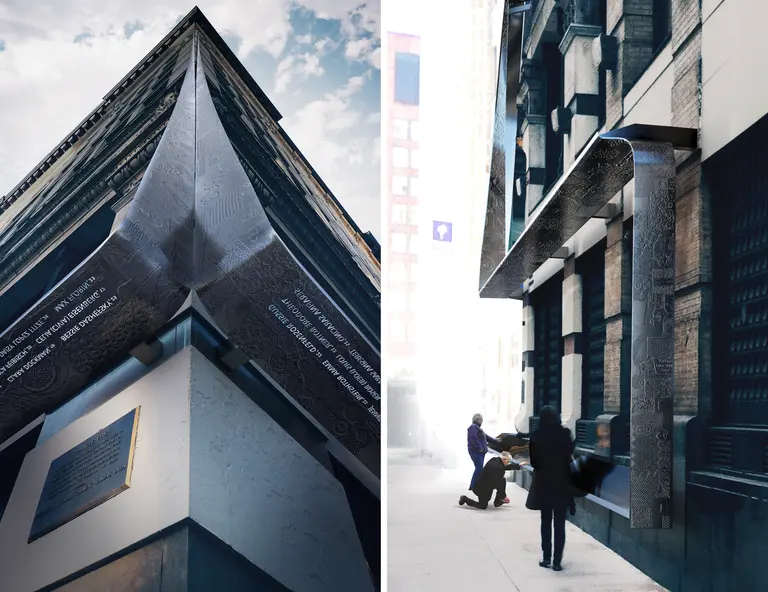
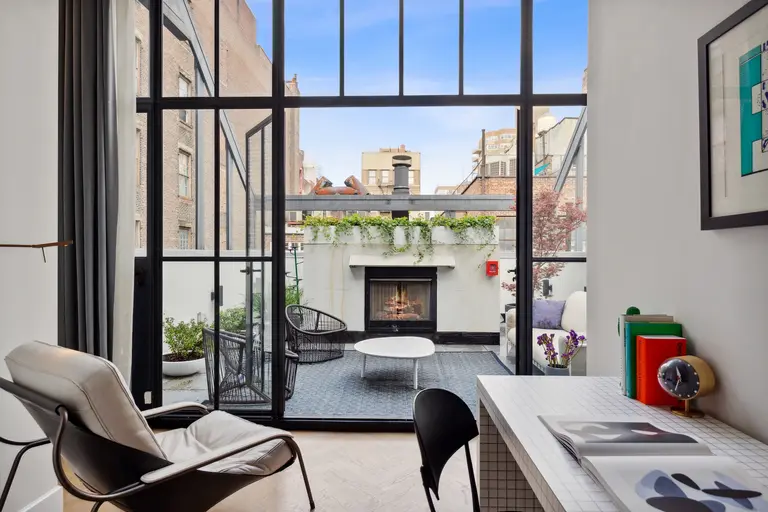
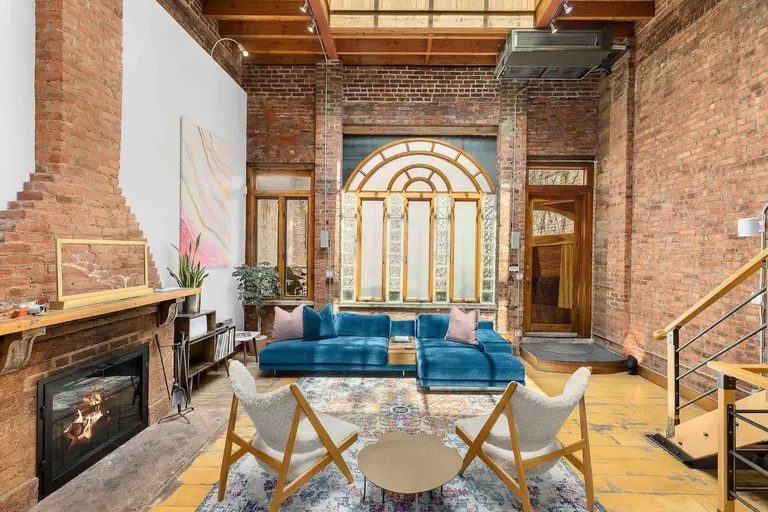











Great photos! I had the honor of meeting McDarrah at a Village Voice auto rally at Trude Heller’s in the early 60s, where Jean Shepherd, Ed Fancher and other VV people were gathered.
His photos in the Village Voice in those days were always spot on!